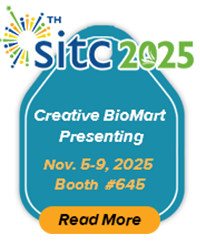| Species : |
Human |
| Source : |
Fibroblast |
| Tag : |
Non |
| Description : |
Interferon-beta is one of the type I interferons produced by fibroblasts in response to stimulation by live or inactivated virus or by double-stranded RNA. It is a cytokine with antiviral, antiproliferative, and immunomodulating activity. The synthesis of IFN-beta can be induced by common inducers of interferons, including viruses, double-stranded RNA, and micro-organisms. It is induced also by some cytokines such as TNF and IL-1. |
| Bio-activity : |
33,000 International Units (IU) |
| Usage : |
No attempt should be made to weigh out any portion of the freeze-dried material prior to reconstitution For all practical purposes each ampoule contains the same quantity of the substances listed above. Dissolve the total contents of the ampoule with 0.5ml of sterile distilled water. Rinse the ampoule with 0.4ml of sterile distilled water and make up the total volume to 1ml with sterile distilled water. This solution should now be at a concentration of 33,000 IU/ml. Use carrier protein where extensive dilution is required. No attempt should be made to weigh out any portion of the freeze-dried material. The glycosylated human interferon beta (IFN-β) contained in this ampoule was produced from human diploid fibroblasts and highly purified by chromatographical procedures. |
| Notes : |
This preparation is not for administration to humans. The preparation contains material of human origin, and either the final product or the source materials, from which it is derived, have been tested and found negative for HBsAg, anti-HIV and HCV RNA. The bovine casein used as an excipient was sourced from a country where bovine spongiform encephalopathy (BSE) has not been found. As with all materials of biological origin, this preparation should be regarded as potentially hazardous to health. It should be used and discarded according to your own laboratorys safety procedures. Such safety procedures should include the wearing of protective gloves and avoiding the generation of aerosols. Care should be exercised in opening ampoules or vials, to avoid cuts. |
| Stability : |
Reference materials are held at Creative Biomart within assured, temperature- controlled storage facilities and they should be stored on receipt as indicated on the label. Accelerated degradation studies have indicated that this material is suitably stable, when stored at -20°C or below, for the assigned values to remain valid until the material is withdrawn or replaced. These studies have also shown that the material is suitably stable for shipment at ambient temperature without any effect on the assigned values. Once reconstituted, diluted or aliquoted, users should determine the stability of the material according to their own method of preparation, storage and use. Users who have data supporting any deterioration in the characteristics of any reference preparation are encouraged to contact Creative Biomart. |
| Storage : |
Unopened ampoules should be stored at -20°C. For economy of use, it is recommended that the solution be sub divided into several small aliquots and stored at -40°C or below. Please note: because of the inherent stability of lyophilized material, Creative Biomart may ship these materials at ambient temperature. |



